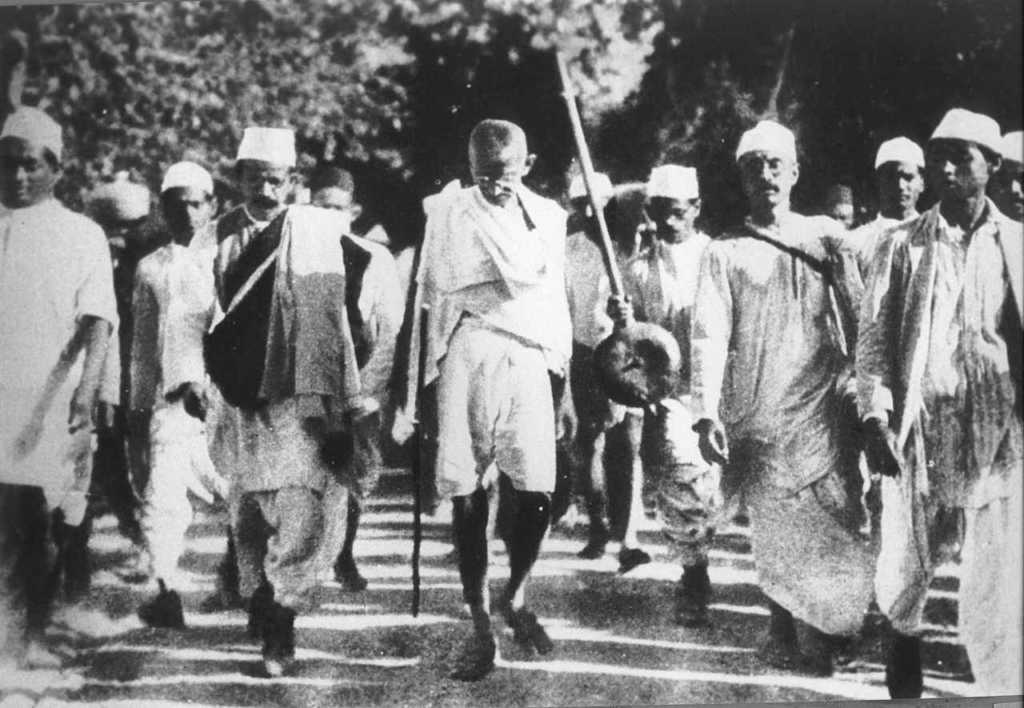The Quit India Movement, whose 70th anniversary was celebrated a couple of days ago, is frequently held up as the last nail in the coffin of British imperialism. It is often claimed that satyagraha accompanied by arson and breakdown of law and order in various parts of the nation that the Quit India Movement spawned forced the British to see the writing on the wall, that they were no longer welcome as rulers of this ancient nation. That the Quit India Movement was a significant event is unquestionable. Gandhiji‘s call for Do or Die invigorated a whole generation of freedom fighters, the brute force deployed by the British in dealing with the Satyagrahis further embittered Indians against their colonial masters and a spirit of freedom and independence permeated the land.
But the impact of Quit India Movement, viewed objectively, reveals that the movement failed to attain the objectives it had set out for itself.
Firstly, the British did not leave the subcontinent until almost 5 years later. Secondly, the British put the entire Congress leadership behind bars, thereby effectively quashing the movement. Thirdly, Congress quit governments that it had formed and ceded ground to the Muslim league. And lastly, the movement did not enjoy support across the political divide and was effectively a movement by the Congress party.
Background:
Elections in British India were held in 1936-37. The Congress formed governments on its own in 8 of the 11 provinces. On the other hand, the Muslim League failed to form a government in any province. Congress, it appeared had secured the mandate of all Indians, irrespective of the Communal divide. Then, in 1939, the British dragged India into the Second World War without any solid assurances for its freedom. Thus peeved, Congress ministers resigned en masse. The fall of Congress ministries was celebrated by its opponents, notably Jinnah, who organized a ‘Youm-e-Nijat’ (day of deliverance) thanking God for the fall of Congress governments. By 1940, Muslim League was emboldened enough to issue Pakistan Resolution in its Lahore session. The Congress, in the meanwhile, continued to sail on two boats. On one hand, it supported the allies in their fight against Germany and Japan and on the other hand it opposed the British for dragging India into the war. Muslim League, on the other hand promptly accepted India’s entry in the World War. The failure of Cripps mission proved to the Congress that the British were reluctant to hand India her independence. Thus, began the preparations for Quit India Movement.
Quit India Movement:
It is widely believed that the British were already aware that the Congress intended to launch a nationwide Satyagraha. Thus, within days of Gandhi’s clarion call of ‘Do or Die’, the entire Congress leadership had been incarcerated. The masses who were now leaderless indulged in looting and destroying infrastructure. Within a matter of a couple of months though, the British had enforced a tenuous peace in the subcontinent. The Communists opposed Quit India Movement after their British counterparts advised them of the Anglo-Soviet alliance and the need for Indian Communists to support war effort. The Muslim League had nothing to do with the Quit India Movement as they had already announced their support to the British in World War II, hoping to get a more favourable hearing of their case. The Hindu Mahasabha, too did not support the Quit India Movement, primarily because they felt that the Quit India movement would hinder the safety and security of Hindus in the country. The Mahasabha aimed to use the War period to militarize the Hindus so as to fight the British and Leaguers when the time came. Interestingly, the Quit India movement was opposed even by Congress leaders, notably Rajaji and Maulana Abul Kalam Azad. Rajaji, parted way with the Congress soon thereafter. Even Ambedkar was not favourably disposed to the entire movement.
Outcomes:
The Quit India Movement fizzled out as soon as it had begun. In the initial phases itself, the movement was characterized by lawlessness and the breakdown of law and order.By then, the Japanese had emerged on India’s borders and Subhash Chandra Bose had caught India’s fancy.
Between dreams of an imminent independence at the hands of INA and ruthless British suppression, the Quit India Movement petered out. By 1944, the British were once again the unchallenged masters of the country. By the time the war ended and fresh elections were held, it was clear that the Congress had ceded ground to the Muslim League which won all Muslim seats in the country. Jinnah was now the proven Leader of Muslims in the Indian subcontinent. Around the same time, the INA trials began and caught the nation’s attention. Stories of supreme sacrifice of Subhash Babu and his INA aroused fury and anger against British colonialists. Soon thereafter mutinies broke out in the Royal Indian Navy and disturbances took place across the country. The British realized that their time was up. In 1947, the British packed up their bags and left, having transferred power to both the Congress in India and Muslim League in Pakistan.
So, when Sonia Gandhi and her party claim credit for the Quit India Movement and describe it as having forced the British to leave, it is not the whole truth. If anything, while the movement should be applauded for seeding the consciousness of independence, it should be damned for its misplaced ideals and its leaders inability to foresee its consequences. What would India have been without the Quit India Movement makes an interesting question to ponder upon.
https://www.sscnet.ucla.edu/southa…/History/Gandhi/Quit.html
http://www.oneindia.com/…/qit-india-movement-was-a-failure…
https://en.wikipedia.org/wiki/Qit_India_Movement
